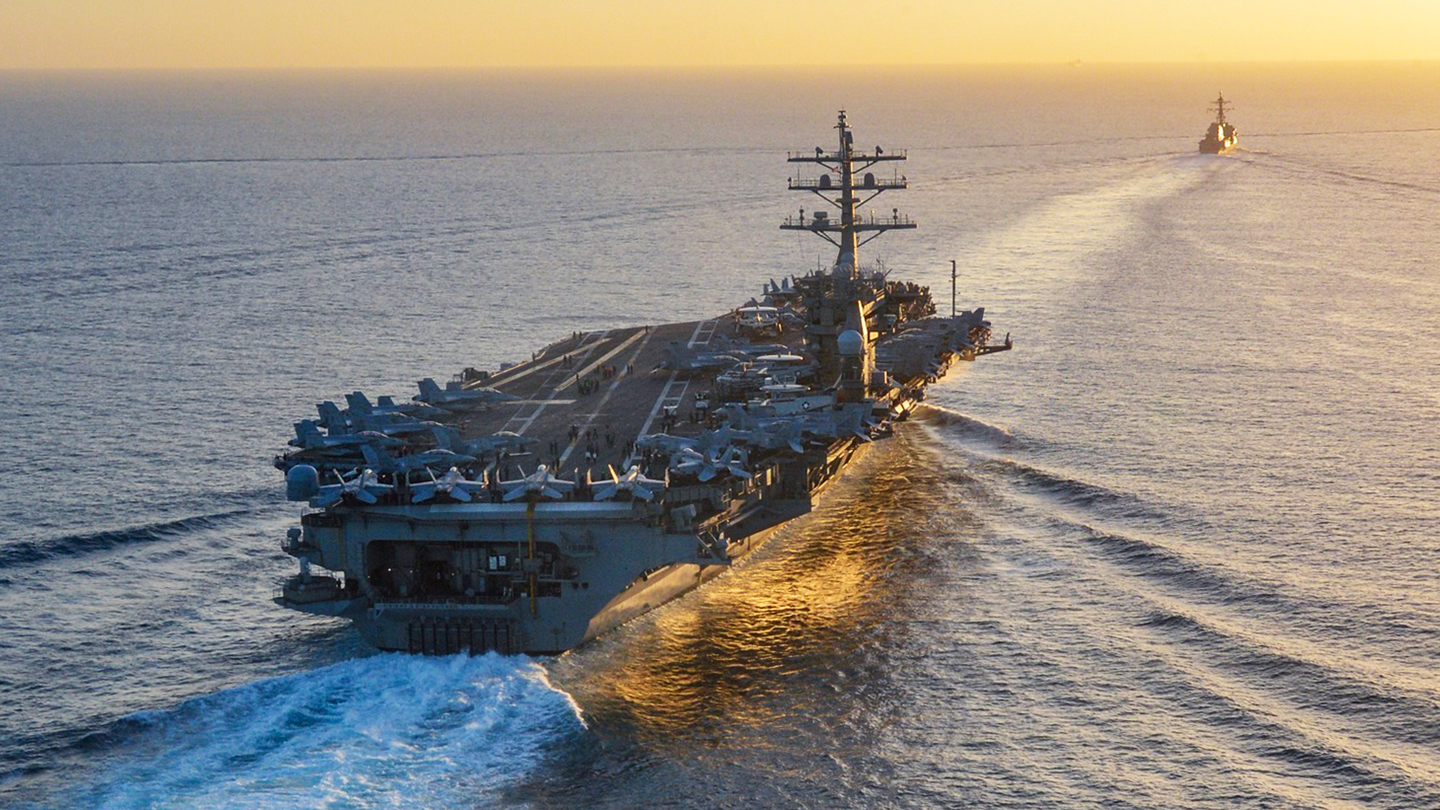There are growing indications that the U.S. and U.K. are about to launch strikes against Houthi targets in Yemen in retaliation for more than two dozen attacks against commercial shipping since Nov. 19, including one earlier this morning.
UPDATE: The strikes have started. Please check out our latest rolling coverage post on them by clicking here.
“UK Prime Minister Rishi Sunak has been holding a conference call with his cabinet about the likelihood of British and US military strikes against the Houthis in Yemen,” the BBC is reporting.
Those attacks are expected tonight, the Times of London claimed on Twitter.
“I’m not going to telegraph, forecast or speculate on any potential future operations,” Air Force Maj. Gen. Pat Ryder, the Pentagon’s top spokesman, told reporters, including from The War Zone Thursday. “And I think that the statement from multiple nations when it comes to the fact that there will be consequences should the Houthi attacks not stop speaks for itself.”
Ryder was referring to a joint warning, issued by 13 nations, on Jan. 3.
Asked by The War Zone to confirm reports that the Houthis are mobilizing forces in Yemen ahead of an expected strike, Ryder declined comment. Nor would he say if Arleigh Burke class guided missile destroyers assigned to a new defensive maritime task force to protect Red Sea shipping might be involved in strikes against Houthi land targets.
“Just to be clear, Operation Prosperity Guardian [OPG], and the charter under which it’s operating, is a defensive coalition. And so its focus is on helping to safeguard commercial vessels and mariners that are transiting the Red Sea region.”
Aside from ships, there are also aviation assets working with OPG, including manned and unmanned reconnaissance aircraft and tactical aircraft and jets from USS Dwight D. Eisenhower, the U.S. aircraft carrier deployed to the region.
There are also numerous U.S. and coalition aircraft at air bases in the region. The considerable amount of airpower that rotates through the region on a regular basis was increased significantly following Hamas’ October attacks on Israel and the IDF’s subsequent assault into Gaza. This was mainly done to prepare for and deter attacks from Iran and its proxies, principally Hezbollah in Lebanon. But the Houthis are key proxies too, and they have continued their campaign against shipping while also launching waves of unsuccessful long-range drone and missile attacks on Israel. Regardless, much of the tactical airpower that was deployed to the region remains there and could be leveraged for strikes against the Houthis.
Earlier on Thursday, White House National Security Council spokesman John Kirby told reporters that: “We’re going to do what we have to do to counter and defeat these threats that the Houthis keep throwing up on commercial shipping.”
The Wall Street Journal reported that maritime executives were told by Western diplomats that targets would likely include missile and drone launch sites, radars and weapons depots around the Yemeni cities of Hodeida and Hajjah. Infrastructure in the capital San’a is also on the list of possible targets, the executives told the publication. As we reported previously, the U.S. is “discussing all kinds of different strike packages against the Houthis, including radar facilities and installations,” a U.S. military official told The War Zone Dec. 21. The official said to us on Jan. 3 that those options had been delivered by CENTCOM to the Pentagon, which is still awaiting further orders.
In response to news about those potential targets, the Houthis said they will “burn the area.”
“Remember what I said well We will not say we will do it and we will do it and we will thunder and lighten, said Houthi Major General Abdul Salam Jahaf. “We will not say words that some will consider an exaggeration. I have only two words. We will burn the area.”
You can read our explainer on the challenges, risks, and misconceptions when it comes to striking the Houthis in our previous explainer linked here. It is more relevant now than ever.
Despite the joint warning, the Houthis have continued their attacks, including one earlier this morning. According to CENTCOM, the Houthis launched an anti-ship ballistic missile into the Red Sea, causing no damage. It was the 27th such attack since Nov. 19, when the Houthis began strikes against Red Sea shipping in support of the Palestinians in the wake of the ongoing Israel-Hamas war.
That followed a large-scale, layered Houthi attack on Jan. 9 described as their biggest so far against shipping in the southern Red Sea, leading to U.S. and U.K. warships and fighters downing 21 drones and missiles. There are no reports of any damage or injuries in the aftermath of the attack. You can read more about it in our initial reporting here.
The Houthis, who became the first in the world to fire anti-ship ballistic missiles in anger, have also been making use of an increasingly diverse arsenal of anti-ship cruise missiles, and layering in kamikaze drones on top, in dozens of attacks in and around the Red Sea in the recent months. You can read more about that arsenal in our deep dive here.
So far, there have been no offensive actions against Houthi targets, but it seems like that could change anytime now. This is a developing story and we will update it with any new details.
Contact the author: howard@thewarzone.com
